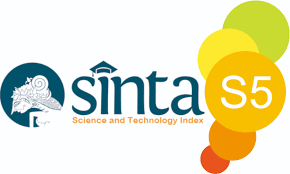Utilization of Augmented Reality as a Solution for Vernacular Language Approaches to Recognize an Object Through Speech Recognition
DOI:
https://doi.org/10.34010/injuratech.v3i1.9954Keywords:
Augmented Reality, Vernacular Language, Speech RecognitionAbstract
With the rise of western culture entering Indonesia, vernacular languages seem no longer essential to learn. People are more concerned with learning foreign languages and cultures so that they are relevant to the times and make it easier to adapt the professions needed, whereas preserving culture is no less important to protect the beloved country of Indonesia. Therefore, a solution relevant to the times is required to solve problems related to this vernacular language. This research aims to create a technology that will provide answers to the community to recognize the vernacular language of a particular object using Augmented Reality and Speech Recognition technology. In supporting the research, we use a qualitative descriptive method and the SDLC waterfall concept in its design. The results obtained indicate that this technology has succeeded in helping to make it easier to find out the vernacular language of an object. Augmented Reality technology gives an exciting impression when using this application. In contrast, Speech Recognition technology makes it easier for users to use this application because they can access it through speech only. With this application, people realize that preserving the vernacular language can be done using today's technology
References
[2] Nurjanah, N., Herlambang, Y. T., Hendrawan, B., & Gandana, G. (2020, March). Regional Language Education in the Era of the Industrial Revolution Era 4.0: An Idea about Education in the Techno-pedagogy Perspective. In Journal of Physics: Conference Series (Vol. 1477, No. 4, p. 042068). IOP Publishing.
[3] Shadiev, R., & Yang, M. (2020). Review of studies on technology-enhanced language learning and teaching. Sustainability, 12(2), 524.
[4] Garzón, J., Pavón, J., & Baldiris, S. (2019). Systematic review and meta-analysis of augmented reality in educational settings. Virtual Reality, 23(4), 447-459.
[5] Parmaxi, A., & Demetriou, A. A. (2020). Augmented reality in language learning: A state‐of‐the‐art review of 2014–2019. Journal of Computer Assisted Learning, 36(6), 861-875.
[6] Rapti, D., Gerogiannis, D., & Soulis, S. G. (2023). The effectiveness of augmented reality for English vocabulary instruction of Greek students with intellectual disability. European Journal of Special Needs Education, 38(2), 185-202.
[7] Kim, D. Y. (2019). A design methodology using prototyping based on the digital-physical models in the architectural design process. Sustainability, 11(16), 4416.
[8] Kramer, M. (2018). Best practices in systems development lifecycle: An analyses based on the waterfall model. Review of Business & Finance Studies, 9(1), 77-84.
[9] Githa, D. P., & Putri, D. P. S. (2019). Rancang Bangun Sistem Rekomendasi Destinasi Wisata Di Bali. SINTECH (Science and Information Technology) Journal, 2(2), 81-90.
[10] Kuswara, A., Supriatna, A. D., & Gunadhi, E. (2019). Sistem Informasi Wisata Pantai Berbasis Web Di Kabupaten Garut. Jurnal Algoritma, 16(2), 201-207.











